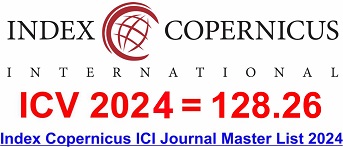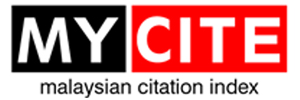Perceptions and Satisfaction in Intrapartum Care among Obese and Non-Obese Women
DOI:
https://doi.org/10.31674/mjn.2024.v16isupp1.009Abstract
Background: Obesity is a major global health issue that negatively impacts pregnancy and childbirth. Maternal obesity is linked to various antenatal, intrapartum, and postpartum complications. Ensuring quality care is essential for safe outcomes for both mother and child. Methods: A comparative cross-sectional study was conducted among a total of 250 mothers, with 112 being non-obese and 138 being obese. These mothers gave birth in eight governmental hospitals. The study aimed to explore the factors that affect the experiences and satisfaction levels of obese and non-obese women during intrapartum care. Results: All non-obese women (100%) and 99.3% of obese women reported positive experiences regarding their capacity during childbirth. Most women in both weight groups felt well-supported and safe. However, both groups reported 100% negative experiences in the participation domain. Satisfaction with physical facilities was low, with 42.9% of non-obese and 38.4% of obese women satisfied. Both groups showed 100% dissatisfaction with the provision of consumables. Pain management methods were satisfactory for 63.4% of non-obese and 60.9% of obese women. Communication patterns had the lowest satisfaction rates among all participants. Conclusion: The study's findings underscore the critical need for improvements in various dimensions of intrapartum care. The significant dissatisfaction with participation, physical conditions, and communication strategies among both obese and non-obese women highlights the urgent areas for enhancement in maternity care facilities. This research is a crucial step towards improving the quality of care and ensuring safe outcomes for both mother and child.
Keywords:
Childbirth Experience, Intrapartum Care, Obesity, Satisfaction with Intrapartum Care, Weight BiasDownloads
References
Abdullah, R. Y., & Ibrahim, R. H. (2024). Association between physical activity and body mass index with sociodemographic factors among public school teachers in Iraqi Kurdistan Region. Movement & Sport Sciences-Science & Motricité, 123, 1-8. https://doi.org/10.1051/sm/2023012
Abelson, P., & Kennedy, D. (2004). The obesity epidemic. Science (New York, N.Y.), 304(5676). https://doi.org/10.1126/science.304.5676.1413
Alayli, A., Krebs, F., Lorenz, L., Nawabi, F., Bau, A.-M., Lück, I., Moreira, A., Kuchenbecker, J., Tschiltschke, E., & John, M. (2020). Evaluation of a computer-assisted multi-professional intervention to address lifestyle-related risk factors for overweight and obesity in expecting mothers and their infants: protocol for an effectiveness-implementation hybrid study. BMC Public Health, 20, 1-13. https://doi.org/10.1186/s12889-020-8200-4
Alkhyatt, M. K., Abdullah, E. K., Ibraim, R. H., Al Anee, B., & Al Raho, J. (2012). Post-traumatic stress in women with breast cancer. Jordan Medical Journal, 46(4), 315-319. Retrieved from: https://platform.almanhal.com/Files/Articles/36351. Accessed on 15th July, 2023.
Bandyopadhyay, K. H., Afzal, M., Mishra, A. K., & Paul, A. (2014). Labor epidural analgesia: Past, present and future. Indian Journal of Pain, 28(2), 71–81. https://doi.org/10.4103/0970-5333.132843
Barbosa, E. M. G., Sousa, A. A. S. d., Vasconcelos, M. G. F., Carvalho, R. E. F. L. d., Oriá, M. O. B., & Rodrigues, D. P. (2016). Educational technologies to encourage (self) care in postpartum women. Revista Brasileira de Enfermagem, 69, 582-590. https://doi.org/10.1590/0034-7167.2016690323i
Bonapace, J., Gagné, G. P., Chaillet, N., Gagnon, R., Hébert, E., & Buckley, S. (2018). No. 355-physiologic basis of pain in labour and delivery: an evidence-based approach to its management. Journal of Obstetrics and Gynaecology Canada, 40(2), 227-245. https://doi.org/10.1016/j.jogc.2017.08.003
Chelagat, D. (2015). A framework to improve postnatal care in Kenya (Doctoral dissertation, University of the Free State, South Africa). Retrieved from: https://scholar.ufs.ac.za/bitstream/handle/11660/1474/ChelagatD.pdf?sequence=1&isAllowed=y Accessed on 15th July, 2023.
Chen, C., Xu, X., & Yan, Y. (2018). Estimated global overweight and obesity burden in pregnant women based on panel data model. PloS One, 13(8). https://doi.org/10.1371/journal.pone.0202183
Dencker, A., Nilsson, C., Begley, C., Jangsten, E., Mollberg, M., Patel, H., Wigert, H., Hessman, E., Sjöblom, H., & Sparud-Lundin, C. (2019). Causes and outcomes in studies of fear of childbirth: a systematic review. Women and Birth, 32(2), 99-111. https://doi.org/10.1016/j.wombi.2018.07.004
Devlieger, R., Benhalima, K., Damm, P., Van Assche, A., Mathieu, C., Mahmood, T., Dunne, F., & Bogaerts, A. (2016). Maternal obesity in Europe: Where do we stand and how to move forward?: A scientific paper commissioned by the European Board and College of Obstetrics and Gynaecology (EBCOG). European Journal of Obstetrics & Gynecology and Reproductive Biology, 201, 203-208. https://doi.org/10.1016/j.ejogrb.2016.04.005
Dieterich, R., & Demirci, J. (2020). Communication practices of healthcare professionals when caring for overweight/obese pregnant women: A scoping review. Patient Education and Counseling, 103(10), 1902-1912. https://doi.org/10.1016/j.pec.2020.05.011
Downer, T. (2019). Exploring antenatal education: An interpretive description (Doctoral dissertation, University of the Sunshine Coast, Australia). https://doi.org/10.25907/00650
Duysburgh, E., Kerstens, B., Kouanda, S., Kaboré, C. P., Belemsaga Yugbare, D., Gichangi, P., Masache, G., Crahay, B., Gondola Sitefane, G., & Bique Osman, N. (2015). Opportunities to improve postpartum care for mothers and infants: Design of context-specific packages of postpartum interventions in rural districts in four sub-Saharan African countries. BMC Pregnancy and Childbirth, 15, 1-11. https://doi.org/10.1186/s12884-015-0562-8
Hamarash, M. Q., Yaas, M. H., Almushhadany, O. I., & Ibrahim, R. H. (2023). Preceptoring of Graduate Nursing Students in Iraq [Article]. Advances in Medical Education and Practice, 14, 1025-1034. https://doi.org/10.2147/AMEP.S418824
Hill, B., & Rodriguez, A. C. I. (2020, November). Weight stigma across the preconception, pregnancy, and postpartum periods: A narrative review and conceptual model. In Seminars in Reproductive Medicine, 38(6), 414-422. Thieme Medical Publishers, Germany. https://doi.org/10.1055/s-0041-1723775
Hoang, A., & Forkner Moore, D. (2021). Utilizing Ultrasound-Guided Technology for Epidural Placement in Obese Laboring Patients, Doctoral Projects. 149. The University of Southern Mississippi, United States.
Retrieved from: https://aquila.usm.edu/dnp_capstone/149, Accessed on 12th July, 2023.
Lim, C. C., & Mahmood, T. (2015). Obesity in pregnancy. Best Practice & Research Clinical Obstetrics & Gynaecology, 29(3), 309-319. https://doi.org/10.1016/j.bpobgyn.2014.10.008
Lindhardt, C. L., Rubak, S., Mogensen, O., Hansen, H. P., Goldstein, H., Lamont, R. F., & Joergensen, J. S. (2015). Healthcare professionals have experienced with motivational interviewing in their encounters with obese pregnant women. Midwifery, 31(7), 678-684. https://doi.org/10.1016/j.midw.2015.03.010
Mahmmoed, H. J., Ibrahim, R. H., & Abdulgani, M. F. (2020). Awareness and dietary adherence of patients with type 2 diabetes mellitus in Mosul: A cross-sectional study. Biomedical and Pharmacology Journal, 13(3), 1415-1422. https://doi.org/10.13005/bpj/2012
Mahmood, H. J., Murad, S. H., Abdullah, M. K., & Ibrahim, R. H. (2022). Quality of life in patients with coronary artery disease: a prospective study. Malaysian Journal of Public Health Medicine, 22(3), 259-267. https://doi.org/10.37268/MJPHM/VOL.22/NO.2/ART.1618
Marshall, N. E., Abrams, B., Barbour, L. A., Catalano, P., Christian, P., Friedman, J. E., Hay Jr, W. W., Hernandez, T. L., Krebs, N. F., & Oken, E. (2022). The importance of nutrition in pregnancy and lactation: Lifelong consequences. American Journal of Obstetrics and Gynecology, 226(5), 607–632. https://doi.org/10.1016/j.ajog.2021.12.035
Mattison, C. A., Dion, M. L., Lavis, J. N., Hutton, E. K., & Wilson, M. G. (2018). Midwifery and obstetrics: Factors influencing mothers' satisfaction with the birth experience. Birth, 45(3), 322–327. https://doi.org/10.1111/birt.12352
Melese, T., Gebrehiwot, Y., Bisetegne, D., & Habte, D. (2014). Assessment of client satisfaction in labor and delivery services at a maternity referral hospital in Ethiopia. The Pan African Medical Journal, 17. https://doi.org/10.11604/pamj.2014.17.76.3189
Missler, M., van Straten, A., Denissen, J., Donker, T., & Beijers, R. (2020). Effectiveness of a psycho-educational intervention for expecting parents to prevent postpartum parenting stress, depression, and anxiety: A randomized controlled trial. BMC Pregnancy and Childbirth, 20, 1-18. https://doi.org/10.1186/s12884-020-03341-9
Modak, A., Ronghe, V., Gomase, K. P., Mahakalkar, M. G., & Taksande, V. (2023). A comprehensive review of motherhood and mental health: postpartum mood disorders in focus. Cureus, 15(9). https://doi.org/10.7759/cureus.46209
Mohammed, D. I., & Ibrahim, R. H. (2023). Exploring the impact of psychological factors on cosmetic surgery acceptance: A cross-sectional study. Informatics in Medicine Unlocked, 39. https://doi.org/10.1016/j.imu.2023.101231
Moran Vozar, T. E., Van Arsdale, A., Gross, L. A., Hoff, E., & Pinch, S. (2021). The elephant in the delivery room: Enhancing awareness of the current literature and recommendations for perinatal PTSD. Practice Innovations, 6(1), 1-16. https://doi.org/10.1037/pri0000134
Reither, M., Germano, E., & DeGrazia, M. (2018). Midwifery management of pregnant women who are obese. Journal of Midwifery & Women's Health, 63(3), 273–282. https://doi.org/10.1111/jmwh.12760
Rose, S., Powell, Z., & Davis, C. (2024). Self-care and general well-being in postpartum mothers. International Journal of Childbirth, 14(1). https://doi.org/10.1891/IJC-2023-0029
Shaw, D., Guise, J.-M., Shah, N., Gemzell-Danielsson, K., Joseph, K., Levy, B., Wong, F., Woodd, S., & Main, E. K. (2016). Drivers of maternity care in high-income countries: Can health systems support woman-centered care? The Lancet, 388(10057), 2282-2295. https://doi.org/10.1016/S0140-6736(16)31527-6
Simko, M., Totka, A., Vondrova, D., Samohyl, M., Jurkovicova, J., Trnka, M., Cibulkova, A., Stofko, J., & Argalasova, L. (2019). Maternal body mass index and gestational weight gain and their association with pregnancy complications and perinatal conditions. International Journal of Environmental Research and Public Health, 16(10), 1-11. https://doi.org/10.3390/ijerph16101751
Sulaiman, M. H., Jasim, M. S., Ahmed, A. A., Ahmed, A. A., Ibrahim, R. H., & Al-Mashhadany, O. I. (2023). A winning formula for nursing education: Effective study strategies and techniques. Teaching and Learning in Nursing, 18(4), e142-e145. https://doi.org/10.1016/j.teln.2023.05.001
Webb, R., Uddin, N., Ford, E., Easter, A., Shakespeare, J., Roberts, N., Alderdice, F., Coates, R., Hogg, S., & Cheyne, H. (2021). Barriers and facilitators to implementing perinatal mental health care in health and social care settings: a systematic review. The Lancet Psychiatry, 8(6), 521–534. https://doi.org/10.1016/S2215-0366(20)30467-3
Weir, C. B., & Jan, A. (2023). BMI classification percentile and cut off points. In StatPearls. StatPearls Publishing, United States. Retrieved from: https://europepmc.org/article/MED/31082114/NBK430685#free-full-text, Accessed on 15th July, 2023.
Rimaitis, K., Klimenko, O., Rimaitis, M., Morkūnaitė, A., & Macas, A. (2015). Labor epidural analgesia and the incidence of instrumental assisted delivery. Medicina, 51(2), 76-80. https://doi.org/10.1016/j.medici.2015.02.002.
World Health Organization. (2000). Obesity: Preventing and managing the global epidemic: report of a WHO consultation. Retrieved from: https://shorturl.at/7m3HR, Accessed on 16th July, 2023.
Published
How to Cite
Issue
Section
License
Copyright (c) 2024 The Malaysian Journal of Nursing (MJN)

This work is licensed under a Creative Commons Attribution-NonCommercial-NoDerivatives 4.0 International License.



































